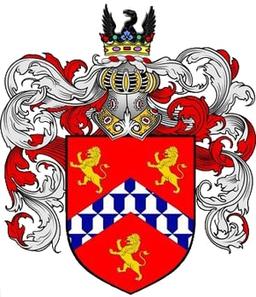2d 12h Left
Community Plate Silver plated Flatware w/ Case, approx 60 pcs & 2 Sterling Silver pcs, ~30 grams$38.00{"message":"In _app.tsx child of Layout","renderCount":1}
1897 Coronation Faberge Egg 7"
Lot Closed
Auction by Connoisseur Online(43)
This item is in Bluffton, SC
Similar Items
4d 0h Left
Susan Manders "Egg Me On"2d 14h Left
Large Marble Footed Bowl, Egermann Czech Urn, Austrian Egg, Fenton Cat Figure, Rococo style hanging$21.0012d 18h Left
Footed Egg Planter & Book$0.253d 15h Left
Vintage cracked egg vase$1.501d 9h Left
IGOR CARL FABERGE PAVLOVA SATINE CRYSTAL STEMWARE$40.002d 18h Left
Rapid Egg Cooker & Rise Sandwich Press$0.254d 17h Left
House of Faberge Imperial 5 in 1 Game Table - Franklin Mint$60.004d 16h Left
George Springer 2024 Topps Easter Egg Parallel SP #72$2.00Overview of 1897 Coronation Faberge Egg 7"
Item Details
1897 Coronation Faberge Egg The egg is made from metal with translucent lime yellow enamel on a guilloche field of starbursts and is about the cloth-of-gold robe worn by the Tsarina at her Coronation. Adorned with clear crystals and high-polished enamel with golden trim. It is trellised with bands of greenish gold laurel leaves mounted at each intersection by a gold Imperial double-headed eagle painted opaque black. This pattern was also drawn from the Coronation robe worn by the Empress. The top opens on a hinge and has a magnetic closure to keep the box securely shut. Fitted inside is a precise replica, less than 3 inches long, of the Eighteenth-century Imperial coach that carried the Tsarina Alexandra to her coronation at Moscow's Uspensky Cathedral. The red color of the original coach was recreated using strawberry colored translucent enamel of the interior was also reproduced in enamels. The coach is surmounted by the Imperial Crown in a crystal. The miniature is complete with moving wheels, opening roof. The piece comes in a beautiful gift box. Faberge Eggs have a remarkable story and while the original Faberge eggs are virtually priceless, extraordinary re-creations of Carl Faberge?s works are not only fabulous to look at but wonderful to own and collect. You ask the question, ?how much would an original Carl Faberge egg cost in today?s market?. Here?s a story that will give you that answer: Los Angeles Times: ?A Faberge egg found at a flea market by a scrap-metal dealer who initially didn't realize the value of what he had discovered will be on public view for the first time in more than a century, according to a British art and antiques dealer. The egg, thought to have been made in the late 19th century for Russian royalty, was purchased years ago at a U.S. flea market for just $14,000, said the antiques dealer, Wartski. The buyer was interested in the item for its gold content but later suspected the piece might be even more valuable. The egg was later sold to a private collector. The identities of the buyer and seller haven't been revealed. Wartski didn't disclose how much was paid for the egg, but some estimates put its value as high as $33 million. It will be on display at Wartski in London from April 14 to 17.? The first Faberge egg was crafted for Tsar Alexander III, who had decided to give his wife, the Empress Maria Fedorovna, an Easter egg in 1885, possibly to celebrate the 20th anniversary of their betrothal. Although there is no official record of the Tsar's inspiration for it, many believe that he was moved by an egg owned by the Empress?s aunt, Princess Vilhelmine Marie of Denmark, which had captivated Maria?s imagination in her childhood and of which the Tsar was well aware. Known as the Hen Egg, the very first Faberge egg is crafted from a foundation of gold. Its opaque white enameled "shell" opens to reveal a matte yellow-gold yolk. This in turn opens to reveal a multicolored gold hen that also opens. The hen contained a minute diamond replica of the imperial crown from which a small ruby pendant was suspended, but these last two elements have been lost.[2] Maria was so delighted by the gift that Alexander appointed Faberge a "goldsmith by special appointment to the Imperial Crown" and commissioned another egg the next year. After that, Peter Carl Faberge was apparently given complete freedom for the design of future imperial Easter eggs, and their designs became more elaborate. According to Faberge family lore, not even the Tsar knew what form they would take?the only requirements were that each contain a surprise, and that each be unique. Once Faberge had approved an initial design, the work was carried out by a team of craftsmen, among them Michael Perkhin, Henrik Wigstrom and Erik August Kollin.[citation needed] After Alexander III's death on 1 November 1894, his son, Nicholas II, presented a Faberge egg to both his wife, Alexandra Fedorovna, and his mother, the Dowager Empress Maria Fedorovna. Records have shown that of the 50 imperial Easter eggs, 20 were given to the former and 30 to the latter. Eggs were made each year except 1904 and 1905, during the Russo-Japanese War.[3] The imperial eggs enjoyed great fame, and Faberge was commissioned to make similar eggs for a few private clients, including the Duchess of Marlborough, the Rothschild family and the Yusupovs. Faberge was also commissioned to make twelve eggs for the industrialist Alexander Kelch, though only seven appear to have been completed.[1] Following the revolution and the nationalization of the Faberge workshop in St. Petersburg by the bolsheviks in 1918, the Faberge family left Russia. The Faberge trademark has since been sold several times and several companies have retailed egg-related merchandise using the Faberge name. The Victor Mayer jewelry company produced limited edition heirloom quality Faberge eggs authorized under Unilever's license from 1998 to 2009. The trademark is now owned by Faberge Limited, wh
Payment
Please pay your online invoice (hammer + 20%BP + 5% online fee + shipping) within 72 hours following the close of a sale. Our teams usually email online invoices with online checkout links within 24-hours following a sale, complete with shipping estimates.
We will automatically charge any open balances to a bidder's card on file as provided at registration, following 72 hours after the close of an auction.
Wire TransferPayPal
Auction Details
Paintings, Coins, Militaria, Antiques199 Rose Hill Way, Bluffton, SC, 29910Saturday, Jun 16, 2018 | 1:00 PM CDT
Auction House
Terms Of Sale
All items are presented "as is." Bidders must practice due diligence in reviewing items presented at auction through descriptions and photos and asking questions before bidding on lots.
All winning bidders are obligated to pay for their won items and their only recourse is to reconsign the lot(s) with Connoisseur for resale should they be dissatisfied with their purchase(s).


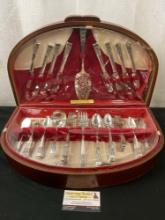

.jpg&w=3840&q=75)
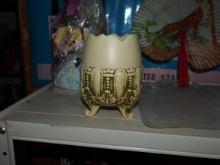
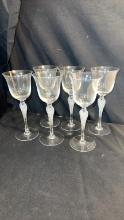
.jpg&w=3840&q=75)
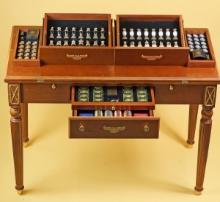
.jpg&w=3840&q=75)
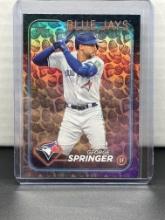
.jpg&w=3840&q=75)
